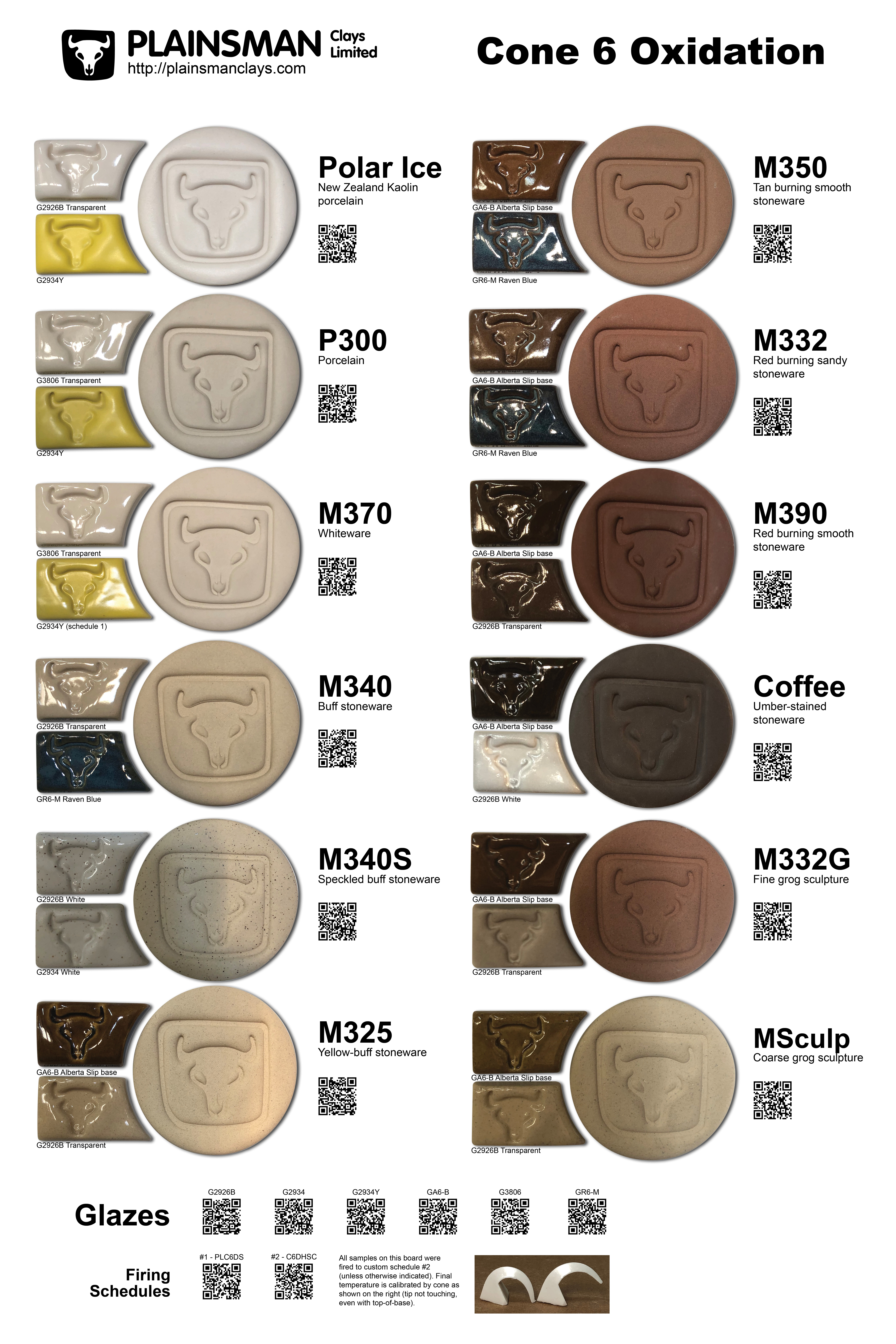Medium Temperature Clay Bodes - Plainsman
Medium temperature bodies (cone 4-7) can vitrify and glazes can melt to be just as strong as ware made at cone 10 (firing to cone 10 oxidation is not normally considered worthwhile, especially from the viewpoint of kiln wear-and-tear and energy consumption). Cone 5 and cone 6 both have their merits.
Firing
Electric kilns do not have good airflow, allow time during the early stages for ware to expel the water and for the vapour to drift out, or be pulled out by your exhaust system. Electronic kiln controllers provide the capability of programming a slow ramp and a drop-and-hold at the end (e.g. the PLC6DS firing schedule minimizes glaze defects).
Monitor firings closely to make sure that they are in fact going to the temperature your kiln controller is set to (very likely they are not). Be aware that different zones in the kiln often fire to different temperatures. Use cones in your firings to verify and adjust the program to compensate as needed (for example, if your program fires to 2190F and cone 6 is not even started, then increase that, perhaps to 2200F).
Glazing
There are many advantages to making your own glazes. But whether you do or do not it is important that glazes fit the clay body, from a ware-strength, aesthetics, safety, and functionality point of view. Crazing, shivering, pinholing, blisters, leaching, etc are all your responsibility to understand and deal with.
If you make your own glazes do not get caught in the trafficking of recipes that do not work. It is better to understand a base matte and base transparent recipe and vary them by additions of colorants, variegators and opacifiers.

